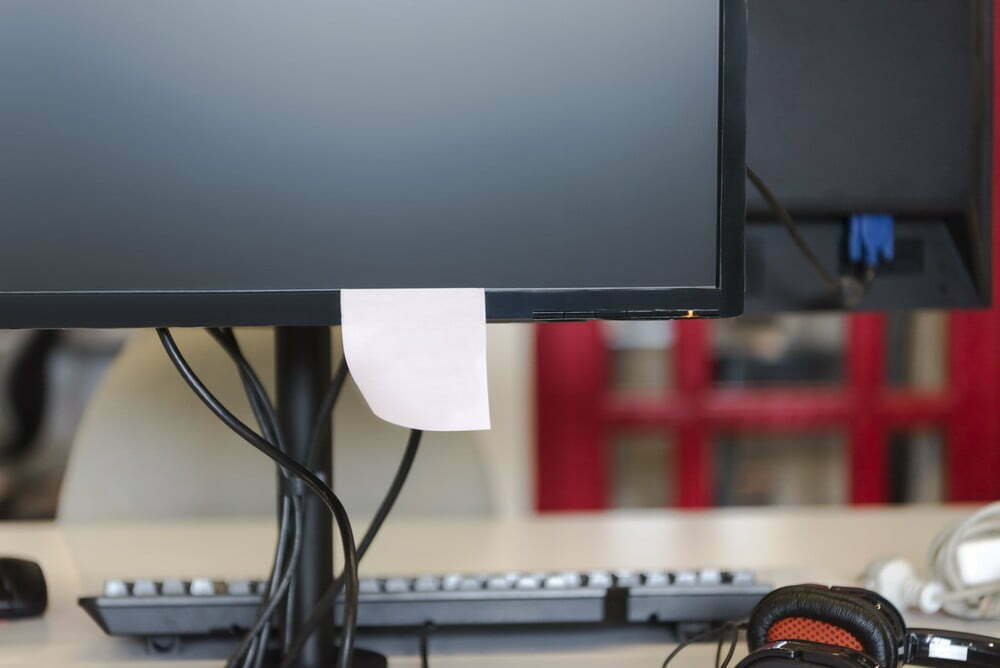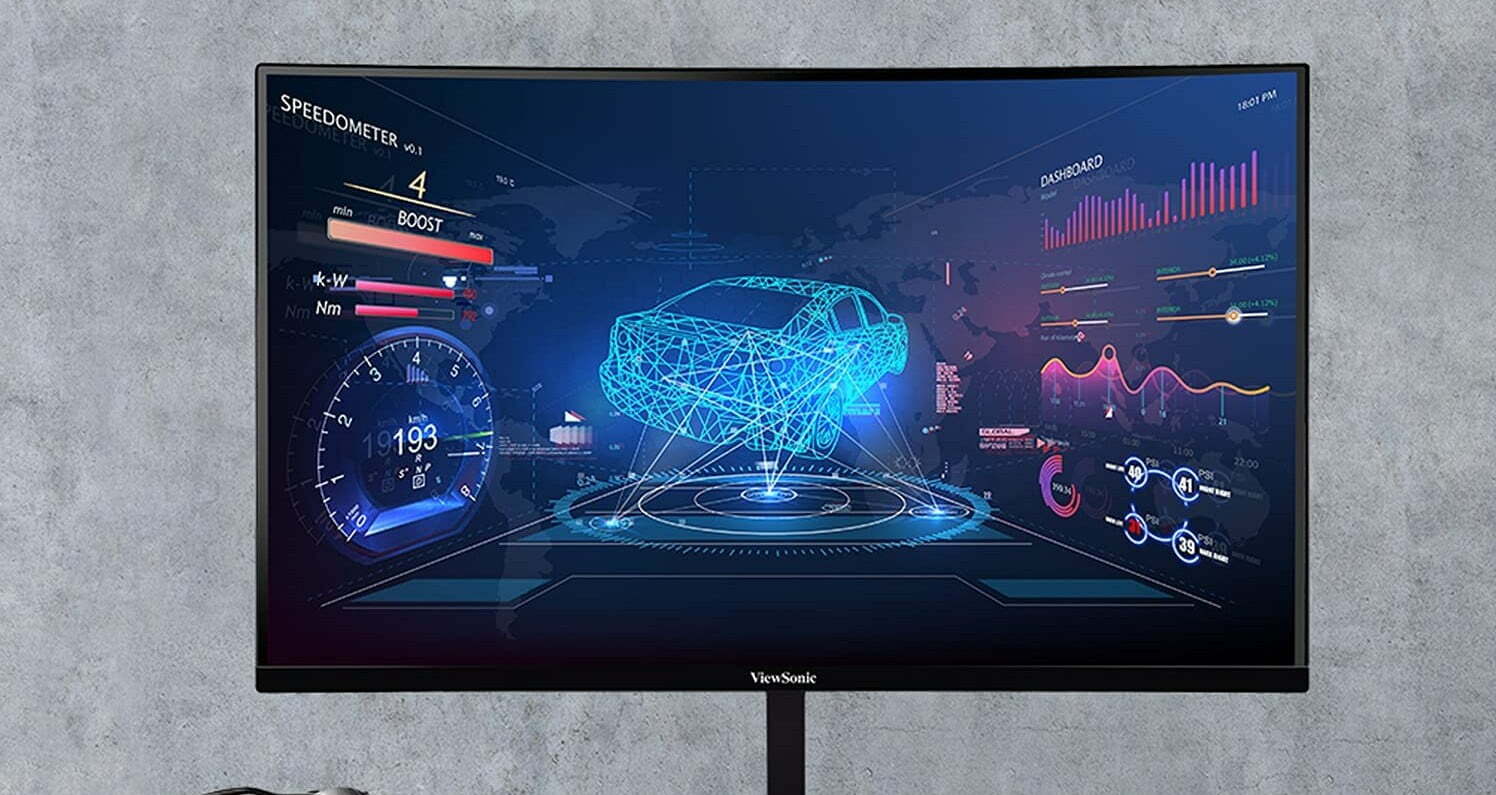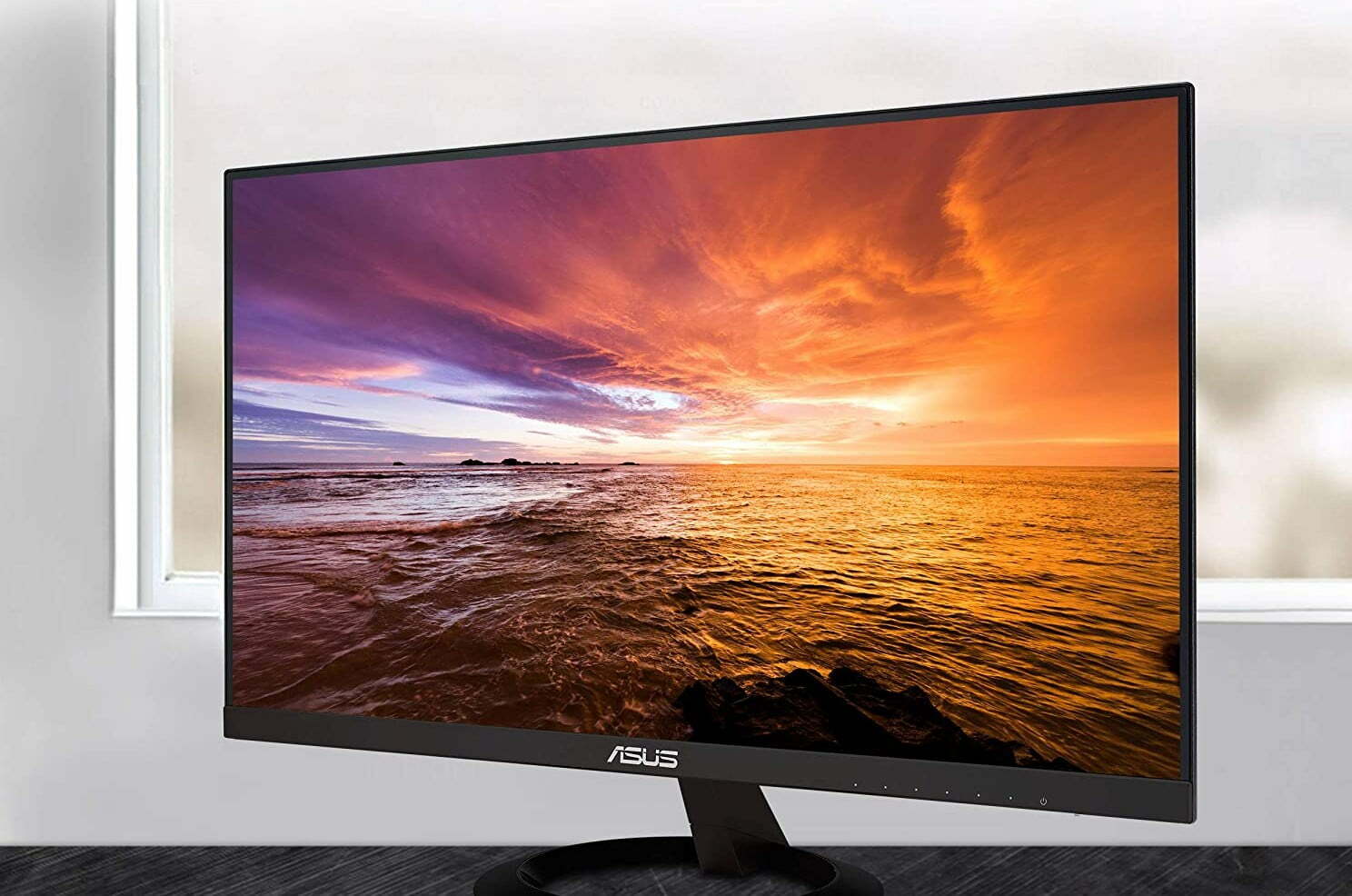How to Adjust Brightness Manually on a Windows Laptop
Most laptop keyboards have shortcut keys you can use to increase and decrease screen brightness. Usually, they’re on the same row of keys as the numbered “function” keys (F1-F12). These keys will usually be labeled with an icon- a sun logo or a similar image, one for increasing brightness and one for decreasing it. Sometimes, these will be function keys themselves, meaning you’ll have to press and hold the “Fn” key simultaneously. The “Fn” is most often located on the bottom-left corner of the keyboard. Be sure not to manhandle your laptop while looking for the shortcut keys, especially if you do not have computer insurance.
How To Adjust Brightness on a Windows 10 Desktop
Windows 10 provides several ways to calibrate and adjust brightness that is easily accessible to all users.
Insider Tip
Keep the battery topped off at a maximum of 90 percent charged.
Using Windows Action Center:
- Press the Windows key + A to open Action Center
- There will be a brightness slider at the bottom of the utility’s window- use this to adjust screen brightness
Using the Settings App:
- Press the Windows key + I to open the Settings App, and click on Settings
- Click on System and then click the Display tab
- Adjust the brightness by moving the slider in the Brightness and Color tab, under “Change brightness for the built-in display.”
Using Windows Power Mode Settings for Laptops and Tablets
Windows laptops and tablets have a feature for managing battery use that will automatically dim your display when your device needs to save power. To access it, press the battery icon in your device’s system tray.
Scroll down to the “Battery saver” tab and check the box next to the “Lower screen brightness while in battery saver” option. Move the slider all the way to the left over the “best battery life” option. When running off battery power, your display will automatically dim when your battery is low. The slider also allows you to choose the battery percentage at which the feature turns on. You can also check out how to change monitor brightness if you do not have a Windows 10 computer.
Warning
A replacement battery can cost up to 1/3rd of the price of the scooter itself.
F.A.Q.
Is there a reason I’d want to turn off auto-brightness on my laptop or tablet if it’s an option?
Though auto-brightness settings can work fine a lot of the time, they won’t always be ideal for all uses, and if you’re finding it hard to work, play games, or watch videos, you might want to adjust brightness manually on a per-use basis.
Why does screen brightness matter?
Screen brightness matters because brightness is the primary factor in display settings contributing to eye strain, headaches, and poor workflow, all of which can damage vision in the long term and reduce productivity.
What is VDT syndrome?
Visual Display Terminal Syndrome is one of the terms used to describe problems related to long-term use of computer displays, including eye strain, long-term vision issues, sleep issues, and chronic headaches. While not 100% avoidable for frequent computer users, there are many ways to help alleviate or limit the effects of VDT syndrome (including proper brightness settings)
Why should I adjust the brightness via Windows and not my display’s built-in controls?
While all external displays feature native display controls, it’s best to adjust settings via Windows because software settings are easily undoable and more convenient and customizable.
STAT: Proper calibration of brightness and other display settings can lower power usage and battery drain significantly (source)
STAT: Proper adjustment of screen brightness prevents excess eye strain by reducing blue light up to a total of 60-70%. (source)
STAT: The default setting of Windows’ Battery Saver utility will dim your display when you have 20% of battery power remaining. (source)
STAT: Windows laptops and tablets often have automatic brightness adjustment features that change brightness based on ambient light detected (source)
REFERENCES:
- https://www.eizo.com/library/basics/10_ways_to_address_eye_fatigue/
- https://www.howtogeek.com/241771/how-to-adjust-your-pcs-screen-brightness-manually-and-automatically/
- https://www.softpedia.com/get/Desktop-Enhancements/Other-Desktop-Enhancements/ScreenBright.shtmlr
- https://www.pcmag.com/how-to/how-to-adjust-your-pc-monitors-brightness-with-the-right-software
Whether you’re using a laptop or a desktop PC, you’re likely going to want to change the brightness of your favorite display from time to time- or pretty frequently, if you use a laptop for work in a variety of locations. While it’s easy enough to change brightness directly on your display, that’s not an option for laptop users, and even those using dedicated displays with desktop PCs may want other options for image control.
KEY TAKEAWAYS:
- Setting brightness correctly can help reduce eye strain for long work periods
- Windows 10 offers plenty of options for adjusting brightness on desktop PCs, laptops, and tablets
- Laptops and tablets offer customizable power-saving modes that automatically adjust brightness
Thankfully, Windows 10 offers a number of ways to control brightness without touching your display’s built-in controls- and laptops and tablets even allow Windows to automatically adjust the brightness based on battery power. Although, if you’re not using Windows 10, you’ll need a general walkthrough about how to change your monitor brightness. Otherwise, keep reading! Below, we’ll walk you through all the ways you can control brightness in Windows 10, and why brightness monitor settings matter.
How to Change Brightness on Windows 10
Working long hours in front of a display that’s either too bright or not bright enough can seriously increase eye strain, which can permanently affect vision over the course of several years. Other settings, like contrast, gamma, hue, monitor viewing angle, and vibrance can also contribute significantly to eye strain, but brightness is the first factor one should consider when setting up optimal display settings.
While brightness and viewing long hours are major factors that contribute to eye strain, having the right LCD monitor type helps, too. If you’re interested in learning more, check out what is an LCD computer monitor.
Related Posts:
How to Adjust Brightness Manually on a Windows Laptop
Most laptop keyboards have shortcut keys you can use to increase and decrease screen brightness. Usually, they’re on the same row of keys as the numbered “function” keys (F1-F12). These keys will usually be labeled with an icon- a sun logo or a similar image, one for increasing brightness and one for decreasing it. Sometimes, these will be function keys themselves, meaning you’ll have to press and hold the “Fn” key simultaneously. The “Fn” is most often located on the bottom-left corner of the keyboard. Be sure not to manhandle your laptop while looking for the shortcut keys, especially if you do not have computer insurance.
How To Adjust Brightness on a Windows 10 Desktop
Windows 10 provides several ways to calibrate and adjust brightness that is easily accessible to all users.
Insider Tip
Keep the battery topped off at a maximum of 90 percent charged.
Using Windows Action Center:
- Press the Windows key + A to open Action Center
- There will be a brightness slider at the bottom of the utility’s window- use this to adjust screen brightness
Using the Settings App:
- Press the Windows key + I to open the Settings App, and click on Settings
- Click on System and then click the Display tab
- Adjust the brightness by moving the slider in the Brightness and Color tab, under “Change brightness for the built-in display.”
Using Windows Power Mode Settings for Laptops and Tablets
Windows laptops and tablets have a feature for managing battery use that will automatically dim your display when your device needs to save power. To access it, press the battery icon in your device’s system tray.
Scroll down to the “Battery saver” tab and check the box next to the “Lower screen brightness while in battery saver” option. Move the slider all the way to the left over the “best battery life” option. When running off battery power, your display will automatically dim when your battery is low. The slider also allows you to choose the battery percentage at which the feature turns on. You can also check out how to change monitor brightness if you do not have a Windows 10 computer.
Warning
A replacement battery can cost up to 1/3rd of the price of the scooter itself.
F.A.Q.
Is there a reason I’d want to turn off auto-brightness on my laptop or tablet if it’s an option?
Though auto-brightness settings can work fine a lot of the time, they won’t always be ideal for all uses, and if you’re finding it hard to work, play games, or watch videos, you might want to adjust brightness manually on a per-use basis.
Why does screen brightness matter?
Screen brightness matters because brightness is the primary factor in display settings contributing to eye strain, headaches, and poor workflow, all of which can damage vision in the long term and reduce productivity.
What is VDT syndrome?
Visual Display Terminal Syndrome is one of the terms used to describe problems related to long-term use of computer displays, including eye strain, long-term vision issues, sleep issues, and chronic headaches. While not 100% avoidable for frequent computer users, there are many ways to help alleviate or limit the effects of VDT syndrome (including proper brightness settings)
Why should I adjust the brightness via Windows and not my display’s built-in controls?
While all external displays feature native display controls, it’s best to adjust settings via Windows because software settings are easily undoable and more convenient and customizable.
STAT: Proper calibration of brightness and other display settings can lower power usage and battery drain significantly (source)
STAT: Proper adjustment of screen brightness prevents excess eye strain by reducing blue light up to a total of 60-70%. (source)
STAT: The default setting of Windows’ Battery Saver utility will dim your display when you have 20% of battery power remaining. (source)
STAT: Windows laptops and tablets often have automatic brightness adjustment features that change brightness based on ambient light detected (source)
REFERENCES:
- https://www.eizo.com/library/basics/10_ways_to_address_eye_fatigue/
- https://www.howtogeek.com/241771/how-to-adjust-your-pcs-screen-brightness-manually-and-automatically/
- https://www.softpedia.com/get/Desktop-Enhancements/Other-Desktop-Enhancements/ScreenBright.shtmlr
- https://www.pcmag.com/how-to/how-to-adjust-your-pc-monitors-brightness-with-the-right-software



































![Best 27 Inch Computer Monitor in [year] 27 Best 27 Inch Computer Monitor in 2026](https://www.gadgetreview.dev/wp-content/uploads/how-to-buy-the-best-computer-monitor.jpg)
![Best BenQ Monitors in [year] 28 Best BenQ Monitors in 2026](https://www.gadgetreview.dev/wp-content/uploads/best-benq-monitor-image.jpg)
![Best ASUS Monitors in [year] 29 Best ASUS Monitors in 2026](https://www.gadgetreview.dev/wp-content/uploads/best-asus-monitor-image.jpg)
![Best Dell Monitors in [year] 30 Best Dell Monitors in 2026](https://www.gadgetreview.dev/wp-content/uploads/best-dell-monitor-image.jpg)
![Best HP Monitors in [year] 31 Best HP Monitors in 2026](https://www.gadgetreview.dev/wp-content/uploads/best-hp-monitor-image.jpg)
![Best Lenovo Monitors in [year] 32 Best Lenovo Monitors in 2026](https://www.gadgetreview.dev/wp-content/uploads/best-lenovo-monitor-image.jpg)
![Best ViewSonic Monitors in [year] 33 Best ViewSonic Monitors in 2026](https://www.gadgetreview.dev/wp-content/uploads/best-viewsonic-monitor-image.jpg)
![Best Gigabyte Monitors in [year] 34 Best Gigabyte Monitors in 2026](https://www.gadgetreview.dev/wp-content/uploads/best-gigabyte-monitor-image.jpg)
![Best Monitors for PS4 Pro Gaming in [year] 35 Best Monitors for PS4 Pro Gaming in 2026](https://www.gadgetreview.dev/wp-content/uploads/best-monitors-for-ps4-pro-image.jpg)
![Best Monitor for Xbox Series X in [year] 36 Best Monitor for Xbox Series X in 2026](https://www.gadgetreview.dev/wp-content/uploads/best-monitor-for-xbox-series-x-image.jpg)
![Best Acer Monitors in [year] 37 Best Acer Monitors in 2026](https://www.gadgetreview.dev/wp-content/uploads/best-acer-monitor-image.jpg)
![Best MSI Monitors in [year] 38 Best MSI Monitors in 2026](https://www.gadgetreview.dev/wp-content/uploads/best-msi-monitor-image.jpg)
![Best SAMSUNG Monitors in [year] 39 Best SAMSUNG Monitors in 2026](https://www.gadgetreview.dev/wp-content/uploads/best-samsung-monitor-image.jpg)
![Best LG Monitors in [year] 40 Best LG Monitors in 2026](https://www.gadgetreview.dev/wp-content/uploads/best-lg-monitor-image.jpg)
![Best AOC Monitors in [year] 41 Best AOC Monitors in 2026](https://www.gadgetreview.dev/wp-content/uploads/best-aoc-monitor-image.jpg)
![Best Philips Monitors in [year] 42 Best Philips Monitors in 2026](https://www.gadgetreview.dev/wp-content/uploads/best-philips-monitors-image.jpg)
![Best Monitors For PUBG in [year] 43 Best Monitors For PUBG in 2026](https://www.gadgetreview.dev/wp-content/uploads/best-monitor-for-pubg-image.jpg)
![Best Stream Decks in [year] 44 Best Stream Decks in 2026](https://www.gadgetreview.dev/wp-content/uploads/best-stream-deck-image.jpg)
![Best Monitors for Streaming in [year] 45 Best Monitors for Streaming in 2026](https://www.gadgetreview.dev/wp-content/uploads/best-monitor-for-streaming-image.jpg)
![Best Monitors For Flight Simulator in [year] 46 Best Monitors For Flight Simulator in 2026](https://www.gadgetreview.dev/wp-content/uploads/best-monitor-for-flight-simulator-image.jpg)




















